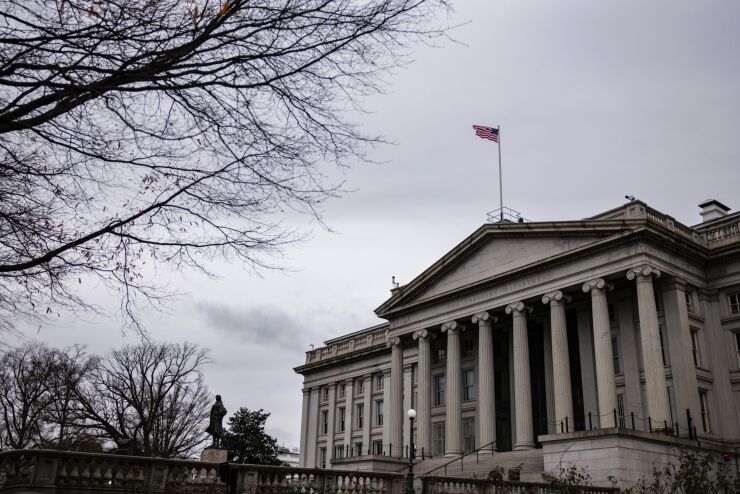The Treasury’s latest tax collection may preview how the shrinking of the Federal Reserve’s $9 trillion balance sheet, or quantitative tightening, will unfold for the markets and global liquidity.
The influx of personal tax receipts pushed the amount of cash in the Treasury’s account at the central bank to $908 billion as of April 20, the most since May 2021, data show. The Treasury General Account, or TGA, operates like the government’s checking account at the Fed. When Treasury increases its cash balance, that’s on the liability side of the Fed’s balance sheet, so as that goes up, it drains reserves from the system, and vice versa.

As a result, outstanding bank reserve balances dropped by $466 billion in the week ended April 20, the largest weekly decline on record, Fed data show.
“Even if the boost to TGA (and hence drain to reserves) was likely a one-off factor associated with year-end tax payments, some of which should now reverse, the medium-term trajectory remains clear: QT is likely to make the outlook for global liquidity for the rest of this year look much more like Q1 than like the spring break markets had been afforded in recent weeks,” Citigroup global markets strategist Matt King wrote in a note to clients.
The Fed is expected to announce its plans for the balance sheet after unveiling more details in the minutes of the March gathering, likely next week. But it’s just as important how market players — including the Treasury — will respond to the Fed’s moves, and that remains a major unknown.
One potential scenario is that it will be felt most acutely as a reduction in bank deposits and reserves, which could put upward pressure on repurchase agreement rates and borrowing benchmarks linked to them, like the Secured Overnight Financing Rate.
That would mean an additional tightening of overall financial conditions in addition to the increase in the main fed funds rate target that the central bank intends to continue boosting. It could also
Meanwhile, if the Treasury chooses to lean more heavily on issuance of bills rather than longer-term debt to plug the funding gap that will emerge from the Fed stepping back, the amount of excess cash in short-term markets — much of which is currently parked at the central bank’s reverse repo facility — could dwindle. That could also potentially exert upward pressure across short-term interest rates.





